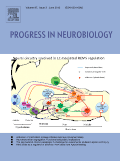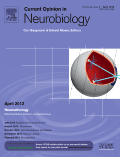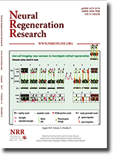
Experimental Neurobiology
metrics 2024
Fostering Academic Excellence in Neurobiology Studies
Introduction
Experimental Neurobiology is a prominent academic journal published by the Korean Society for Brain and Neural Science and the Korean Society for Neurodegenerative Disease, dedicated to advancing the field of neurobiology. With an ISSN of 1226-2560 and an E-ISSN of 2093-8144, this journal plays a pivotal role in disseminating innovative research findings from 2015 to 2024. The journal has established its relevance within the scientific community, achieving a Q3 ranking in Cellular and Molecular Neuroscience and a Q2 ranking in Neurology (Clinical) as of 2023. Researchers exploring the complexities of neurobiology will find a platform for their findings, as it currently holds a rank of #182 in clinical neurology and #73 in cellular and molecular neuroscience within the Scopus database. Although open access is not presently available, the journal remains committed to academic excellence and provides a critical resource for those engaged in the study of neurological diseases and mechanisms.
Metrics 2024
 0.69
0.69 1.80
1.80 2.80
2.80 31
31Metrics History
Rank 2024
Scopus
IF (Web Of Science)
JCI (Web Of Science)
Quartile History
Similar Journals

NATURE REVIEWS NEUROSCIENCE
Fostering discourse among the brightest minds in neuroscience.NATURE REVIEWS NEUROSCIENCE is a prestigious journal published by NATURE PORTFOLIO, renowned for its commitment to advancing the field of neuroscience. Since its inception in 2000, it has become a significant platform for disseminating comprehensive reviews and insights that shape the understanding of neurological science. With an impressive Scopus ranking of #2 out of 113 in the General Neuroscience category, this journal consistently engages the top 2% of researchers and professionals in the field, underscoring its impactful contributions. The journal not only provides a forum for high-quality reviews but also bridges emerging research trends with established knowledge, fostering a robust discourse among scholars and practitioners. As a Q1 journal in Neuroscience (miscellaneous), NATURE REVIEWS NEUROSCIENCE offers invaluable access to critical research developments, making it an essential resource for students, researchers, and professionals aiming to stay at the forefront of neuroscience advancements. Explore the latest findings and engage with a global community dedicated to unraveling the complexities of the nervous system.

EXPERIMENTAL NEUROLOGY
Fostering Excellence in Neurobiological Inquiry.EXPERIMENTAL NEUROLOGY is a premier academic journal published by Academic Press Inc, Elsevier Science, focusing on advancements in the fields of Developmental Neuroscience and Neurology. With an impressive Impact Factor and ranked in the Q1 quartile of both categories—positioning it among the top-tier journals—this publication has established itself as a vital resource for researchers, clinicians, and students alike. Since its inception in 1959, it has fostered the dissemination of cutting-edge research and innovative approaches to understanding neurological function and related disorders. While EXPERIMENTAL NEUROLOGY currently operates under a subscription access model, its rich archives and ongoing contributions to the field continue to inspire and inform the next generation of neurobiologists. The journal also boasts a high ranking in Scopus, placing fourth in Developmental Neuroscience and twentieth in Neurology, indicating its robust influence and scholarly significance. For those committed to advancing knowledge in these critical areas, EXPERIMENTAL NEUROLOGY is an indispensable platform for inquiry and discovery.

NEUROSCIENCE RESEARCH
Championing High-Quality Neuroscience ResearchNEUROSCIENCE RESEARCH, published by Elsevier Ireland Ltd, is a leading journal in the field of neuroscience, with a notable reputation for disseminating high-quality research that spans a variety of topics within the discipline. With an ISSN of 0168-0102 and an E-ISSN of 1872-8111, this journal serves as a vital platform for both established researchers and emerging voices in the field. Ranking in the Q2 quartile in both Medicine and Neuroscience categories, it has been recognized as a reliable source of innovative findings since its inception in 1984, with continuous publication through 2024. Although it does not currently offer Open Access options, the journal is indexed in Scopus, holding a significant position at Rank #48/113 in General Neuroscience, reflecting its contribution to advancing the understanding of neural mechanisms across various contexts. With its address anchored in Ireland, NEUROSCIENCE RESEARCH plays an essential role in bridging scientific inquiry and practical applications, making it an indispensable resource for researchers, professionals, and students dedicated to the burgeoning field of neuroscience.

AIMS Neuroscience
Advancing neuroscience through open access innovation.AIMS Neuroscience is an esteemed open-access journal published by the American Institute of Mathematical Sciences (AIMS), dedicated to advancing the field of neuroscience since its inception in 2014. With a robust ISSN of 2373-8006 and an E-ISSN of 2373-7972, this journal aims to provide a platform for innovative research and scholarly discourse that spans the diverse and dynamic landscape of the neuroscience discipline. As of 2023, it holds a respectable Q3 category ranking in the miscellaneous neuroscience field and ranks #65 out of 113 in general neuroscience according to Scopus, positioning it in the 42nd percentile for impact. AIMS Neuroscience encompasses a broad scope of topics, from neurobiology and cognitive neuroscience to computational models and neuroengineering, making it a vital resource for researchers, professionals, and students alike. The journal's commitment to open access ensures that cutting-edge research is freely available, fostering collaboration and knowledge sharing within the global neuroscience community.

REVIEWS IN THE NEUROSCIENCES
Unlocking the Complexities of the BrainREVIEWS IN THE NEUROSCIENCES is a prestigious peer-reviewed journal published by Walter de Gruyter GmbH, specializing in the multidisciplinary field of neuroscience. With a robust history dating back to 1986 and a converged publishing timeline through to 2024, this journal serves as an essential platform for researchers and professionals who seek to explore the complexities of neuroscience in a rapidly evolving landscape. The journal is currently indexed in Scopus, boasting an impressive rank of #19 out of 113 in the General Neuroscience category, positioning it in the 83rd percentile of academic journals. It is classified within the Q2 quartile, reflecting its significant impact and contribution to the field. While not an Open Access publication, the journal offers extensive access options for institutions and individuals eager to stay informed about the latest findings and advancements in neuroscience. REVIEWS IN THE NEUROSCIENCES aims to provide comprehensive reviews covering a wide range of topics in neuroscience, fostering scholarly discussion and advancing knowledge, making it an invaluable resource for researchers, academics, and students alike.

PROGRESS IN NEUROBIOLOGY
Exploring the Depths of Brain FunctionPROGRESS IN NEUROBIOLOGY is a prestigious journal dedicated to advancing the field of neuroscience, published by Pergamon-Elsevier Science Ltd. With an impressive impact factor, it stands as a critical resource for researchers, professionals, and students alike, featuring rigorous peer-reviewed articles that explore the latest developments in neurobiology. The journal has established itself as a leading publication, ranked in the Q1 category for Neuroscience (miscellaneous) and holding a notable 13/113 rank in General Neuroscience per Scopus metrics, placing it in the top 12% of its field. Since its inception in 1959, PROGRESS IN NEUROBIOLOGY has covered a wide array of topics, from molecular mechanisms to cognitive processes, fostering a comprehensive understanding of brain functions. While the journal is not open access, it ensures accessibility to profound knowledge through institutional subscriptions. Researchers and scholars will find critical analyses and innovative research that are pivotal for both foundational knowledge and cutting-edge investigations in the neuroscience realm.

CURRENT OPINION IN NEUROBIOLOGY
Advancing Knowledge in Neuroscience DynamicsCURRENT OPINION IN NEUROBIOLOGY, published by CURRENT BIOLOGY LTD, stands as a premier interdisciplinary journal in the field of neuroscience, specifically focusing on the latest advancements and emerging trends in neurobiology. With an impressive impact factor bolstered by its classification in Q1 in the Neuroscience (Miscellaneous) category and a notable Scopus rank of #16 out of 113 within General Neuroscience, this journal serves as an essential resource for academics, professionals, and students alike. Since its inception in 1991, CURRENT OPINION IN NEUROBIOLOGY has consistently provided insightful reviews covering various aspects of neurobiological research, thereby enhancing our understanding of complex neural processes. While the journal is not open access, it remains committed to disseminating high-quality research and fostering scholarly dialogue, making it a critical platform for those seeking to keep abreast of the dynamic developments in neuroscience.

Neuroscience Bulletin
Cutting-edge research for a deeper understanding of neuroscience.Neuroscience Bulletin is a prestigious academic journal published by SPRINGER, focusing on the dynamic and interdisciplinary field of neuroscience. Established in 2005, this journal has consistently provided a platform for groundbreaking research, showcasing contributions that span various aspects of neuroscience, physiology, and medicine. With an admirable impact factor and recognition as a Q1 journal in both Medicine and Neuroscience categories for 2023, it ranks highly in the Scopus metrics, reflecting its importance in advancing scientific knowledge and practice. Researchers and professionals alike benefit from its cutting-edge articles, which are accessible through traditional subscription models. The Neuroscience Bulletin plays a crucial role in disseminating significant findings and fostering collaboration within the global research community, making it an essential resource for anyone engaged in the exploration of neural mechanisms, treatments, and innovations.

Neural Regeneration Research
Exploring the frontiers of developmental neuroscience.Neural Regeneration Research is a premier Open Access journal, published by Wolters Kluwer Medknow Publications, dedicated to advancing the field of Developmental Neuroscience. Since its inception, the journal has established itself as a valuable resource for researchers, professionals, and students alike, providing a comprehensive platform for disseminating the latest findings and methodologies in neural regeneration. With an impressive Scopus Ranks placement of #3 out of 49 in its category and a Q2 Quartile ranking, the journal boasts a significant impact within the academic community, reflecting its high quality and relevance. Since adopting an Open Access model in 2011, it has expanded access to critical research in neural regeneration, fostering collaboration and innovation among scholars globally. Covering various aspects of neuroscience, its converged years from 2006 to 2025 highlight the journal's commitment to ongoing discourse and discovery. Situated in China, the journal not only promotes local insights but also connects the global research community to pressing topics in neuroscience, making it an essential read for anyone involved in this dynamic field.

eNeuro
Innovating the future of neurobiology, one study at a time.eNeuro is a prominent open-access journal published by the Society for Neuroscience, dedicated to advancing the field of neuroscience through the dissemination of high-quality research. Launched in 2015, it reflects its commitment to accessibility by providing a platform for innovative studies and advancements in neurobiology. The journal holds a strong reputation, achieving a Q1 ranking in Medicine (miscellaneous) and a Q2 in Neuroscience (miscellaneous) as of 2023, with Scopus rankings placing it at #56 out of 113 in General Neuroscience, marking it in the 50th percentile. With its convergence to cover articles from 2014 to 2024, eNeuro continues to serve as a vital resource for researchers, professionals, and students alike, offering a comprehensive hub for the latest discoveries and theoretical developments in neuroscience. As part of its mission, eNeuro aims to foster collaboration and inspire the academic community with openly accessible content, making significant contributions to scientific discourse.